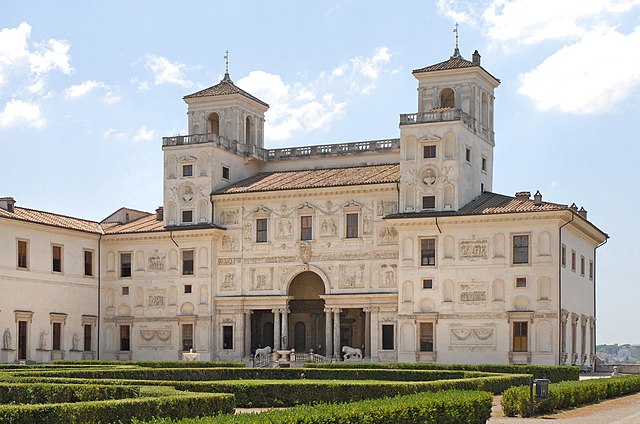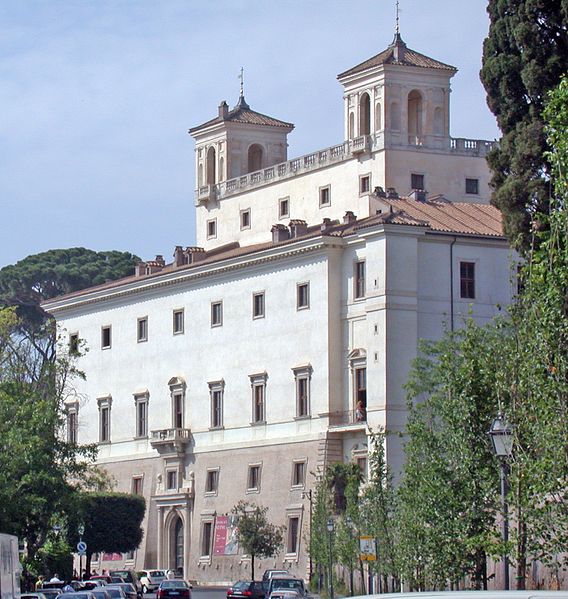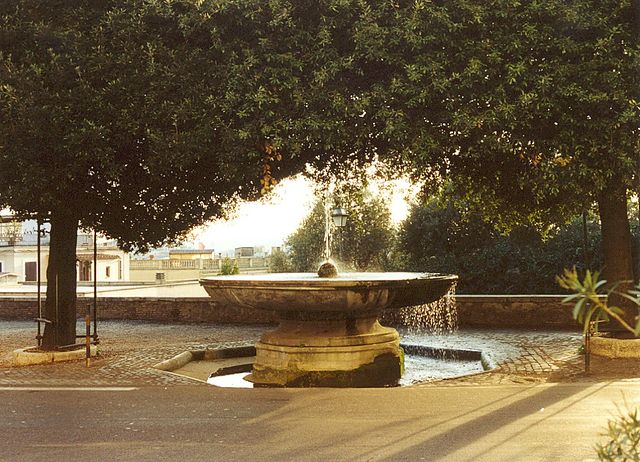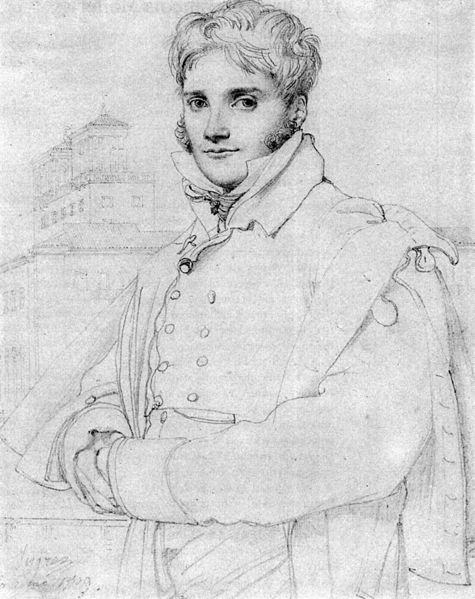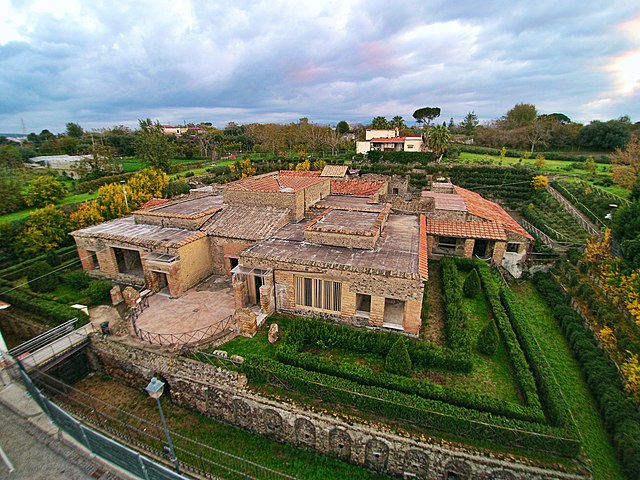The Villa Medici is a Mannerist villa and an architectural complex with a garden contiguous with the larger Borghese gardens, on the Pincian Hill next to Trinità dei Monti in Rome, Italy. The Villa Medici, founded by Ferdinando I de' Medici, Grand Duke of Tuscany and now property of the French State, has housed the French Academy in Rome since 1803. A musical evocation of its garden fountains features in Ottorino Respighi's Fountains of Rome.
Villa Medici in Rome
Villa Medici seen from the Piazza Trinità dei Monti above the Spanish Steps.
The fountain in 2002.
Portrait by Ingres of fellow student Merry-Joseph Blondel in front of the Villa in 1809.
A villa is a type of house that was originally an ancient Roman upper class country house. Since its origins in the Roman villa, the idea and function of a villa have evolved considerably. After the fall of the Roman Republic, villas became small farming compounds, which were increasingly fortified in Late Antiquity, sometimes transferred to the Church for reuse as a monastery. Then they gradually re-evolved through the Middle Ages into elegant upper-class country homes. In the early modern period, any comfortable detached house with a garden near a city or town was likely to be described as a villa; most survivals have now been engulfed by suburbia. In modern parlance, "villa" can refer to various types and sizes of residences, ranging from the suburban semi-detached double villa to, in some countries, especially around the Mediterranean, residences of above average size in the countryside.
The Villa Medici in Fiesole with early terraced hillside landscape by Leon Battista Alberti
The Villa Tamminiemi, an Art Nouveau styled villa and house museum in Helsinki, Finland
Villa of the Mysteries in Pompeii seen from above
Model of Fishbourne Roman Palace, a governor's villa on the grandest scale

